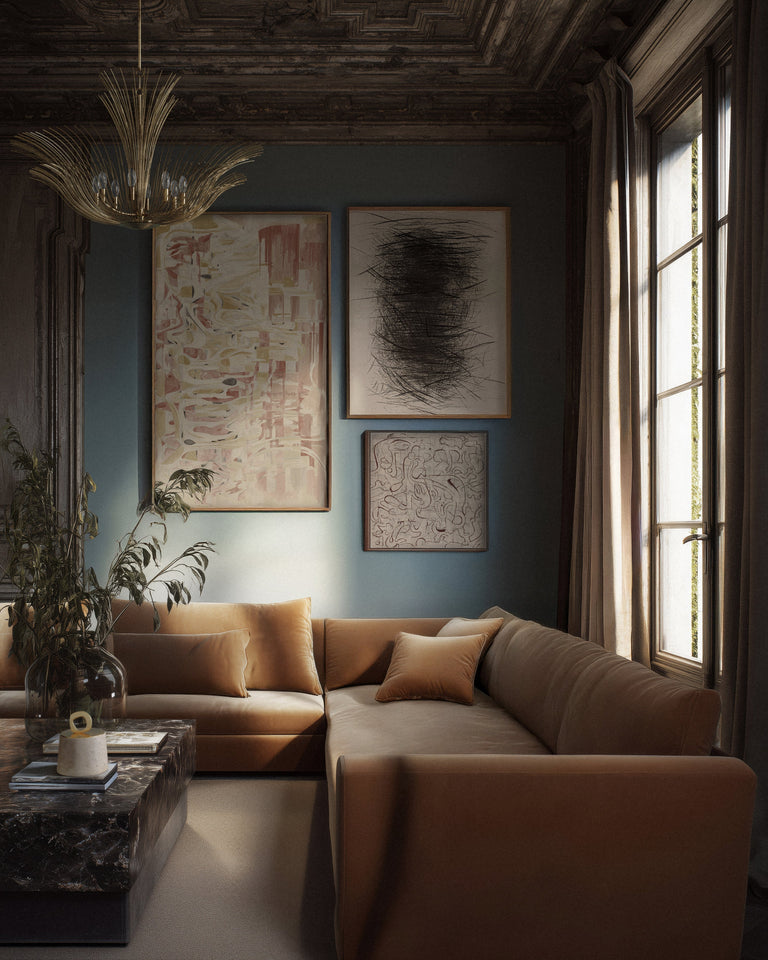
Mastering Proportion: Learning From Klint and Hjorth
In the hands of a master craftsman, wood speaks a language older than words, a vocabulary of curve and grain, proportion and texture that communicates directly with our senses. This is the story of how two visionary designers transformed this ancient dialogue into a modern philosophy of luxury, one that whispers rather than shouts, that seduces through subtlety rather than spectacle.
The Poetry of Proportion: Kaare Klint's Revolutionary Vision
Copenhagen, 1917. While the world was convulsing with war and revolution, a young architect named Kaare Klint was quietly revolutionizing how we understand the relationship between human body and crafted object. His approach was deceptively simple: measure everything. Measure how people sit, how they reach, how they rest. Then, with mathematical precision married to intuitive grace, create forms that serve these movements with unprecedented elegance.

Image Courtesy of Danish Design Review
But Klint's genius translated cold data into warm, sensuous form. His chairs didn't merely accommodate the human body; they embraced it. The famous Safari Chair, with its leather sling seat suspended between precisely calculated wooden curves, understood that comfort is the pleasure of yielding to something beautiful.
Klint's wood spoke in flowing sentences rather than sharp proclamations. His proportions followed a logic so perfect it felt inevitable, yet so subtle it seemed magical. He understood that the most profound luxury is the luxury of feeling completely at ease, where every dimension, every angle, every curve has been considered with obsessive care.

Image Courtesy of Danish Design Review
The Sensual Functionalist: When Utility Becomes Art
What made Klint revolutionary was his refusal to accept the false choice between beauty and function. In his hands, a chair's backrest was a gesture of welcome, its curve echoing the natural arch of the human spine while creating a visual rhythm that pleased the eye. His table legs brought architectural dignity to domestic space, their proportions calibrated to create a sense of lightness.
The turning of his chair legs, executed with hand tools and generations of inherited skill, created surfaces that seemed to breathe. Light played across these subtly modulated forms, revealing new relationships throughout the day. This wasn't decoration added to structure; it was structure made decorative through the sheer perfection of its proportions.

Image Courtesy of Wright Auction
The Architect's Eye: Axel Einar Hjorth's Sculptural Revolution
If Klint was a poet of proportion, then Axel Einar Hjorth was a sculptor of space. Working from his position as chief designer at Svenskt Tenn in the 1930s, Hjorth brought an architect's understanding of mass and void to the intimate scale of furniture, creating pieces that functioned as both useful objects and spatial sculptures.

Living room installation in the autumn 1934 exhibition at Liljevalchs Konsthall, Stockholm. Photo: Courtesy Svenskt Tenn archive via Phaidon
Consider his legendary "Lovö" series, with its gently tapering legs that seem to grow from the earth rather than merely rest upon it. These weren't legs in the conventional sense—they were sculptural elements that happened to provide support, their curves so perfectly calibrated that they seemed inevitable. The transition from vertical to horizontal, from leg to seat, was accomplished with such grace that the eye couldn't detect the exact moment of change.

The Artisan's Hand: Where Craft Becomes Character
Both Klint and Hjorth understood something that mass production would later forget: the human hand leaves traces the human eye craves. Their turned legs bore the subtle irregularities that prove human involvement...not flaws, but signatures of authenticity that connected user to maker across time and space.
Their approach to joinery was equally sensuous. Where others might hide the connection between parts, Klint and Hjorth celebrated these moments of union. Their joints were designed to be beautiful and satisfying to contemplate. They understood that the eye takes pleasure in understanding how things fit together, how separate elements become unified wholes.
The Language of Legs: Where Structure Becomes Poetry
Perhaps nowhere is the genius of Klint and Hjorth more evident than in their treatment of table and chair legs, elements that could easily be merely functional but which they transformed into expressions of grace and strength.
The hand-turning process they championed created legs that were round in section but infinitely varied in profile. These weren't the uniform cylinders that machines might produce, but organic forms that swelled and tapered in response to structural needs and visual desires. A table leg might be fuller where it needed to resist lateral forces, more slender where it could afford delicacy.
The Sensuous Frame: Introducing the Celine Bed
It is within this rich tradition of sensuous modernism that we present the Celine Bed, a piece that embodies everything Klint and Hjorth taught us about the relationship between form, craft, and human experience.
The bed's scalloped headboard frame flows in rhythmic curves that echo the Danish masters' understanding of proportion and grace. Each curve has been calculated not just for visual pleasure but for the way it catches and releases light throughout the day, creating a constantly changing play of highlight and shadow that keeps the eye engaged without ever becoming tiresome.
But it is in the bed's legs that the influence of Klint and Hjorth is most evident. Hand-turned from solid oak using techniques that would have been familiar to both masters, these legs demonstrate how traditional craft can serve contemporary needs without sacrificing beauty or authenticity.
The sensuous form of each leg tells the story of its making—the gentle swelling at the top that provides visual and structural strength, the elegant taper that creates lightness without fragility, the subtle curves that follow the logic of the wood grain while satisfying the eye's need for variety within unity.
These are not legs in the merely functional sense, but sculptural elements that happen to provide support. They ground the bed's floating headboard frame, creating a dialogue between the horizontal emphasis of the scalloped curves and the vertical punctuation of the turned supports. Together, frame and legs create a composition that is both architecturally strong and sensuously inviting.
This is furniture that understands the body's needs and the spirit's desires, that serves practical function while feeding aesthetic hunger. In the tradition of the Danish masters, it proves that the greatest luxury is not what announces itself most loudly, but what serves most completely—supporting not just our physical comfort but our deeper need for beauty in daily life.
Available in our curated fabric palette and COM.
Discover how the Celine Bed continues the dialogue between sensuous form and thoughtful function that defined an era of design excellence.
Recent Edits







